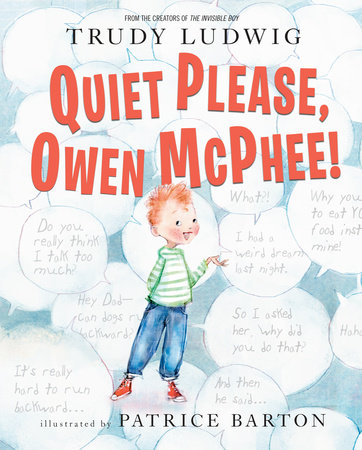Listen Up! 3 Kid-Friendly Activities To Build Listening Skills
by Trudy Ludwig
“We speak with more than our mouths.
We listen with more than our ears.”
—Fred Rogers
Getting kids to talk is relatively easy. But getting them to really listen to what others have to say? Well, that takes a whole lot more work. I should know. I was quite the chatterbox as a child.
When I was little, I had the tendency to be long-winded. It drove my family, especially my father, crazy. I remember one particular occasion when Dad asked what my plans were for the day. After hearing me drone on and on, he interrupted my endless monologue with this terse parental command: “Trudy, speak in headlines!”
We humans have a basic need to be heard and understood. We all want to feel that what we have to say is worth hearing and caring about. That’s the basis for building collaborative personal and professional relationships. But what talkative kids (and, yes, adults) don’t get is that the more they talk, the less people will listen. Communication expert Dr. Mark Goulston reports that even after just 20 seconds of talking, listeners may start tuning out if they’re not included in the conversation.
Being over-communicative isn’t just about talking incessantly; it can also take the form of interrupting someone who is sharing information, feelings, or opinions. When we interrupt the conversation, we’ve stopped listening because we focus our attention on what we want to say next, devaluing what the speaker is saying. As Minda Zetlin aptly summarized on Inc.: “If you constantly share your opinions, no one will seek them out.”
So how can we help our chatty children understand that too much talking can get in the way of listening, and, in turn, connecting and collaborating with those around them? Start with these kid-friendly activities to help build their listening skills:
Family Time Read-Alouds
Children’s stories are wonderful supplemental tools that help build kids’ social-emotional learning skills. So why not incorporate into your family read-alouds picture books that show both in text and illustrations the beauty and benefits of being a good listener? Stories like my picture book Quiet Please, Owen McPhee! help young readers connect with the characters and become more aware of how their actions and words both negatively and positively impact others. (Also take advantage of the discussion questions in the back matter of Quiet Please, Owen McPhee! to generate thoughtful conversations with your child on the topic of listening.)
Popcorn Storytelling
This collaborative listening activity brings a fun, new twist to the age-old tradition of oral storytelling. You really have to pay attention to what you’re hearing or you’ll miss your chance to contribute to the story thread. Try it on road trips, family hikes, and at family meals. One person starts making up a story by sharing the first few lines and then shouts, “Popcorn!” to let the next person in the group pick up the story where the first person left off. So it goes until everyone has had several chances to add to the story and the story comes to a timely end.
“Picture This!” Activity
For this activity, you’ll need some paper and pencils. Draw ahead of time on a piece of paper a picture made up of simple shapes and stick figures. Don’t show that drawing to your children. Give them each a blank piece of paper and a pencil and then instruct them on how to draw your picture — without letting them peek at it. When they’re done, have them compare their drawings to yours to see which one’s picture was most similar to yours. Then switch roles until everyone gets a turn giving and listening to drawing instructions.
Helping our kids to hear others’ points of view — particularly those not in alliance with their own — is challenging. But by being good role models ourselves when it comes to listening, we can help them in their efforts to connect and engage with one another in kinder, more caring ways.
-
Get the Book:

